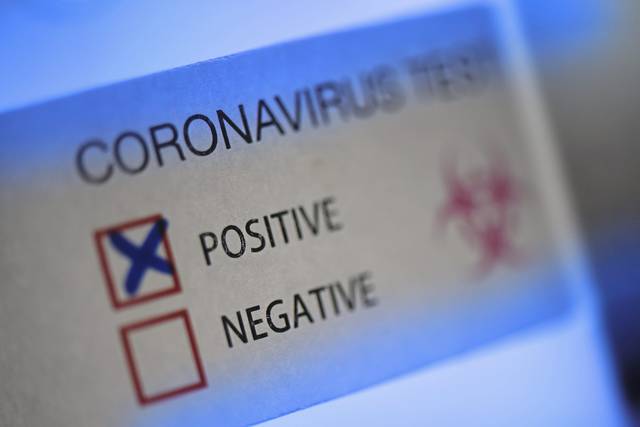https://triblive.com/local/pitt-cedars-sinai-researchers-discover-why-some-covid-patients-develop-severe-inflammation/
Pitt, Cedars-Sinai researchers discover why some covid patients develop severe inflammation

Researchers from the University of Pittsburgh School of Medicine and Cedars-Sinai believe they have discovered why some covid-19 patients develop severe inflammation.
Since March, scientists have sought to understand this issue. Pediatric covid-19 patients can sometimes display Multisystem Inflammatory Syndrome in Children (MIS-C), a rare but potentially fatal complication that includes persistent fever and severe inflammation that can impact bodily symptoms.
This new research shows that the molecular structure and sequence of the SARS-CoV-2 spike protein — part of the virus that causes covid-19 — could be responsible for the inflammatory syndrome seen in some patients.
The study was conducted by senior co-authors Dr. Moshe Arditi, director of the Pediatric Infectious Diseases and Immunology Division at Cedars-Sinai, and Ivet Bahar, distinguished professor and John K. Vries Chair of computational and systems biology at Pitt School of Medicine. The study was published this week in the Proceedings of the National Academy of Sciences.
“It looks like we know the reason, the origin of this very strong reaction that some children and also some adult patients with very severe covid-19 have,” Bahar said.
The study uses computational modeling to identify a part of the SARS-CoV-2 spike protein that researchers believe may act as a superantigen. This superantigen spurs the immune system into “overdrive,” as in toxic shock syndrome — a rare, life-threatening complication of bacterial infections.
“A superantigen is a very strong immune response, more than needed,” Bahar explained. “Like anything else, when you have a very, very strong response, it has damaging effects.”
Bahar and her team created a computer model to demonstrate the interaction between the SARS-CoV-2 viral spike protein and the receptors on human T-cells.
T-cells are white blood cells that help the body fight off infection. But when activated in abnormally large numbers — as is the case with superantigens — they can produce high quantities of inflammatory cytokines, small proteins involved in immune system signaling. This is known as a cytokine storm, which can cause severe inflammation. Cytokine storms can be severe and life threatening.
Bahar’s computer model revealed a specific region of the SARS-CoV-2 spike protein with superantigenic features that interacts with T-cells. Researchers compared that to a bacterial protein that causes toxic shock syndrome and found similarities in both sequence and structure.
“The superantegenic region is very similar to a bacterial toxin,” Bahar said.
Researchers noted that the SARS-CoV-2 superantigen showed “a high affinity” for binding T-cell receptors — the first step toward a runaway immune response.
Discovering these similarities between SARS-CoV-2 and the bacterial structure that causes toxic shock syndrome provides new opportunities for treating patients with the syndrome and adult covid-19 patients with cytokine storm, Bahar said.
“Once we know that there are those regions in the spike that behave like a superantigen, causing this excessive immune response, now we would like to see how we can prevent that,” she said. “We can learn from what has been done with similar [bacterial] toxins and see if those antibodies that have been already generated to fight them would work.”
Since they’re so similar, Bahar said, there’s a good chance those antibodies could help covid-19 patients, too. So far, she said, it looks promising. But she estimates it’ll take about a month to have enough data for that study.
Bahar noted the importance of computational technology in this study.
“What I might highlight is the fact that we are really taking advantage of computational technology,” she said. “We were able to screen all the existing viral sequences and identify this portion that mimics the bacterial superantigen.”
Additional authors to this study include Mary Hongying Cheng and She Zhang from Pitt; Rebecca Porritt and Magali Noval Rivas at Cedars-Sinai; and Lisa Paschold, Edith Willscher, and Dr. Mascha Binder from Martin Luther University Halle-Wittenberg.
Copyright ©2025— Trib Total Media, LLC (TribLIVE.com)
